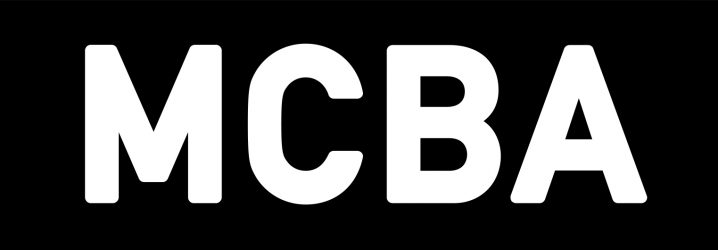What Are Book Arts?
Book Arts are a group of art forms that range from traditional skills such as papermaking, letterpress printing, and bookbinding, to new methods of artmaking inspired by the form and function of books.
Here at MCBA, we define the book as a “contained narrative,” meaning book artists have limitless possibilities when it comes to finding homes for their stories. Installations, sculptures, broadsides: it’s all book art! We teach, exhibit, and practice these primary art forms:
Bookbinding
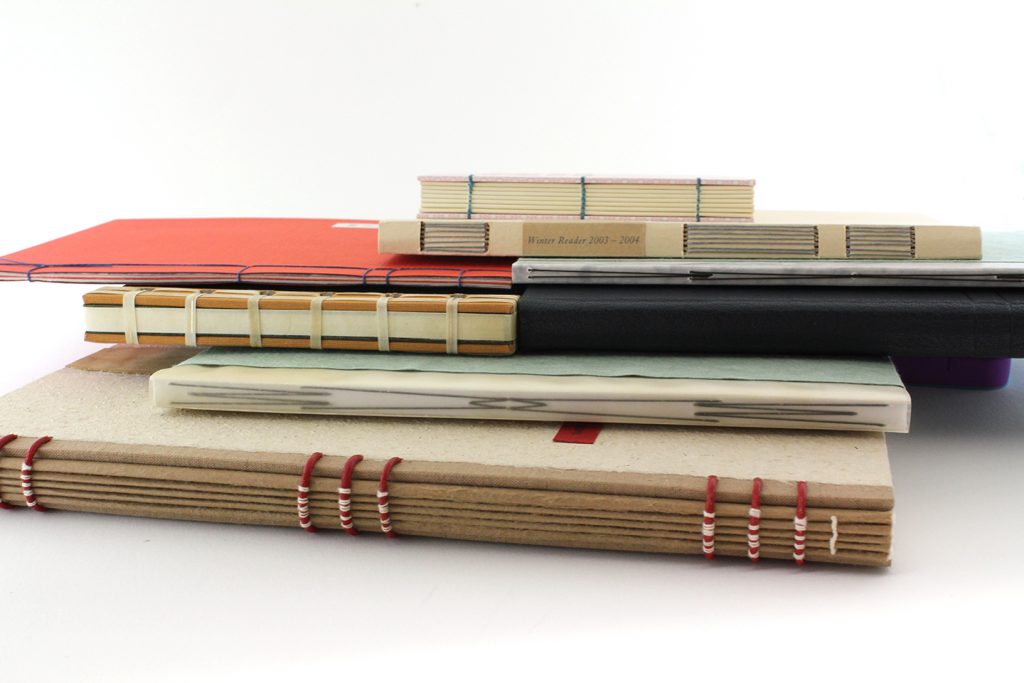 Bookbinding is the process of joining together stacks of paper, folded or unfolded, between a cover to form a book. The structure we are most familiar with is the codex, which is bound along one edge by sewing or applying a flexible layer of glue, but there are many other structures employing many different materials.
Bookbinding is the process of joining together stacks of paper, folded or unfolded, between a cover to form a book. The structure we are most familiar with is the codex, which is bound along one edge by sewing or applying a flexible layer of glue, but there are many other structures employing many different materials.
Today, commercial books are bound by machine. But traditional bookbinding survives as a skill and an art—from the creation of unique, handmade books, to the restoration of old volumes.
Letterpress Printing
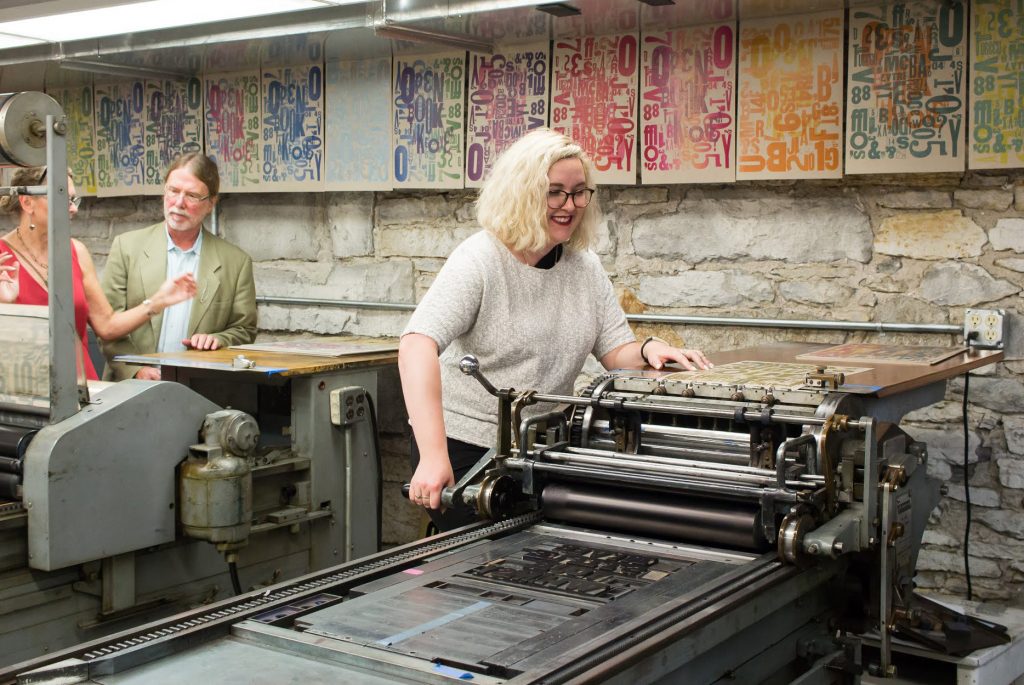 Also known as relief printing, letterpress is the oldest printing method, prevailing from 1450 until the early 1900s. When we use a rubber stamp, we are essentially printing by letterpress! The process starts by arranging metal or wood type on a printing press and applying ink to the raised surface. (The surrounding area, being lower, receives no ink and therefore does not print.) A printing plate transfers the ink directly to the paper by means of pressure.
Also known as relief printing, letterpress is the oldest printing method, prevailing from 1450 until the early 1900s. When we use a rubber stamp, we are essentially printing by letterpress! The process starts by arranging metal or wood type on a printing press and applying ink to the raised surface. (The surrounding area, being lower, receives no ink and therefore does not print.) A printing plate transfers the ink directly to the paper by means of pressure.
Although letterpress requires much more time and effort than digital printing, the artform is enjoying a comeback as people increasingly seek out and value the handmade over the mass produced.
Marbling
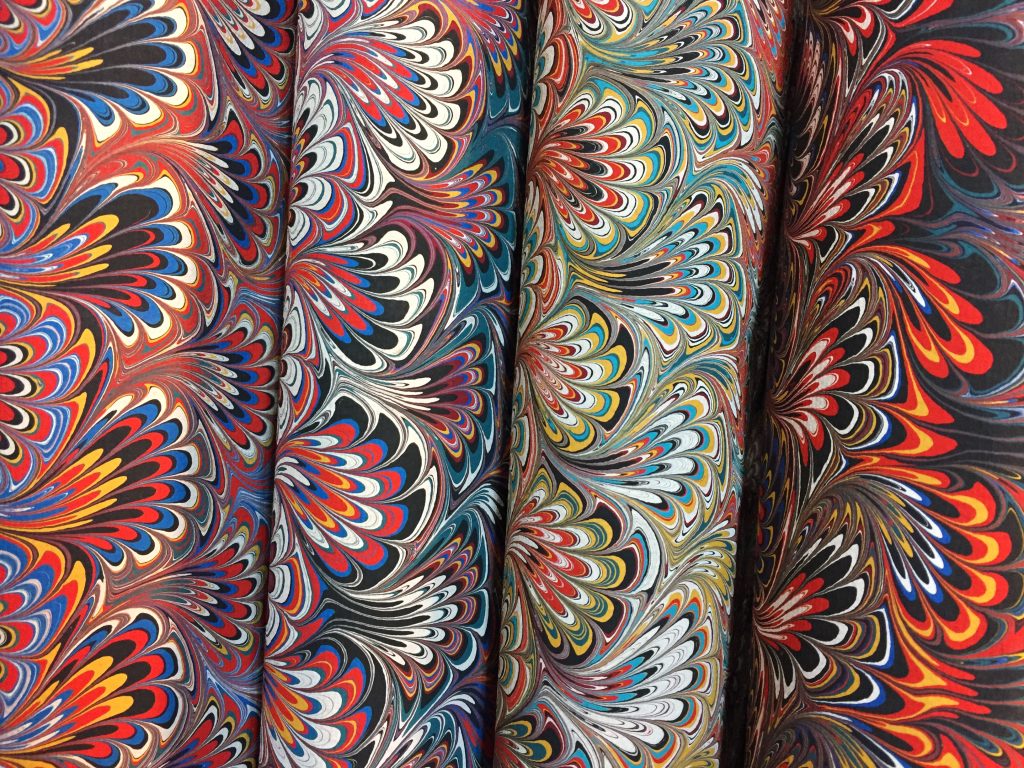 Marbling is the process of floating and manipulating ink on water to create swirly patterns or freeform shapes, then transferring these patterns onto paper.
Marbling is the process of floating and manipulating ink on water to create swirly patterns or freeform shapes, then transferring these patterns onto paper.
The earliest form of marbling, suminagashi, dates back to 12th century Japan, when people would move drops of ink with their breath or a fan. The decorative papers were then used as book covers, end papers, and stationery. Later, in Turkey, ebru marblers dragged combs through ink to create more controlled patterns.
Papermaking
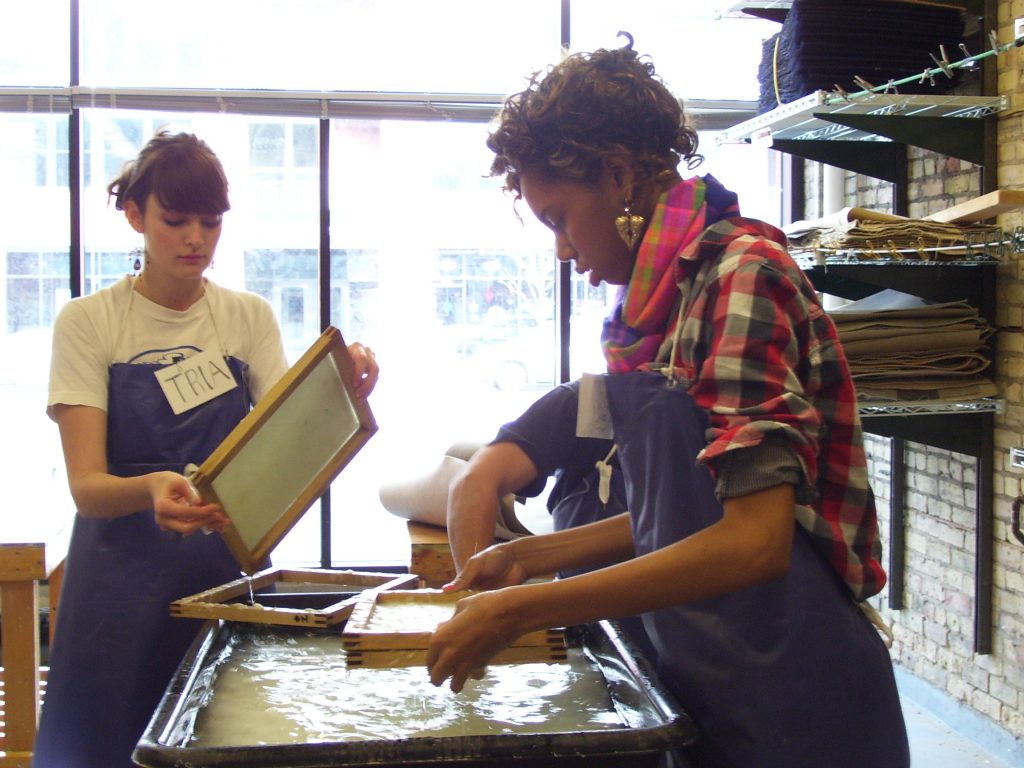 The process of creating paper is similar around the world and throughout time: soak plant fibers, beat the fibers apart, form sheets with pulp fibers, and dry the sheets. The plants and tools used to create paper differ and are usually sourced from each region, creating a rich variety of textures, colors, and surfaces.
The process of creating paper is similar around the world and throughout time: soak plant fibers, beat the fibers apart, form sheets with pulp fibers, and dry the sheets. The plants and tools used to create paper differ and are usually sourced from each region, creating a rich variety of textures, colors, and surfaces.
Screen Printing
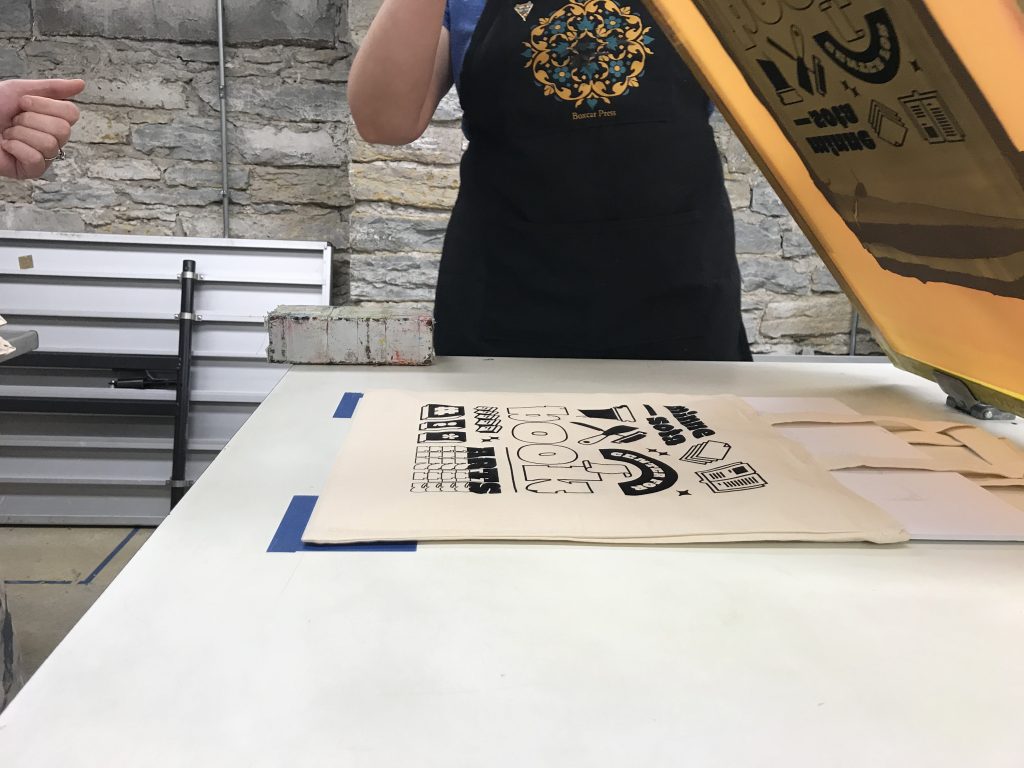 Screen printing refers to the process of applying inked images to any flat surface, from T-shirts and tote bags to wood, vinyl, or metal. After burning a stencil into a fine mesh screen, printers pull a squeegee across the screen to press ink through porous areas while leaving impermeable areas uninked. Also known as silkscreen, serigraphy, or serigraph printing, screen printing is beloved for its versatility.
Screen printing refers to the process of applying inked images to any flat surface, from T-shirts and tote bags to wood, vinyl, or metal. After burning a stencil into a fine mesh screen, printers pull a squeegee across the screen to press ink through porous areas while leaving impermeable areas uninked. Also known as silkscreen, serigraphy, or serigraph printing, screen printing is beloved for its versatility.

